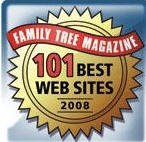Monday's schedule included a two-hour Arolsen Q&A by Paul A. Shapiro (USHMM), who revealed details concerning the Arolsen records and answered the concerns and questions of conference attendees.
Said Shapiro, the ITC never had a trained archivist nor historian on its staff, and therefore no standards of classification nor cataloging were followed. Instead of complete classification, documents were broken down into five general categories.
Because documents were not completely described, a search such as one for Dachau reveals only 45 collections of material by title. However, a search for all Dachau material reveals more than 300 collections, as the descriptions are not complete. According to Shapiro, "If only 30% of a file was about Dachau and the rest was something else, a person writing the description might not have listed Dachau specifically."
Under each camp entry, there are multiple categories of documentation: camp system, prisoner cards, infirmary cards, etc. Many camps had their own correspondence with lists of prisoners and their numbers; sometimes only numbers were listed. The original corresponding lists are essential to decipher additional information.
Post-war documentation, Shapiro said, numbers some 14.5 million pages, including a large number of DP cards (displaced persons), many with pictures. "Many files were never opened," he said, as researchers stopped when other information was located in answer to inquiries.
When the U.S. liberated the camps, survivors were interviewed as to who did what. Shapiro said there are thousands of "flimsy copies;" perpetrators are named. They are the only copies of these materials.
When Shapiro visited 20 years ago, he recognized that the paper was disintegrating, and digitization began according to the technological standards available then; the originals were destroyed.
The goal today is to organize a searchable database. He reminded attendees that Yad Vashem's online searchable database took 12 years to complete.
"We don't yet have the materials, so classification is not easily accessible," he said, adding that there will be an August meeting at the USHMM with invited hi-tech and archival specialists to talk about this.
There is a current request backlog of upwards of 400,000, with 2.5 million previously-received inquiry files. Many contain genealogical material, personal and historical information. According to the agreement, Shapiro said these will become accessible after 25 years.
On privacy controls, he said the US pushed for immediate access, while other countries wanted 100 years before access. He felt that the 25-year figure was reasonable.
What will Arolsen's role be when USHMM has the digital copies? Its function is first inquiry and response, along with preservation of documents. Shapiro believes the documents have been well-conserved in Germany.
A point made several times was that until Greece, Italy and France ratify the agreement, no one can see the material. Shapiro also said that records will be available to academic researchers, such as university history departments.
Concerning Holocaust insurance settlement claims, Shapiro said no one has ever looked at the the Displaced Persons or individual persons files for this information. However, he said, if someone believes they may still have open Generali claims dependent on the ratification of the remaining three countries, then USHMM will do a priority search in the central name index. He warned that DP file information will not be available for several years, but in any case it cannot be accessed until the three countries ratify the agreement.
Shapiro indicated that USHMM is expecting 13.5 million camp documents this summer, and more in the fall. However, USHMM does not yet have any idea of the structure as they have not received test materials, although they are training some staff to respond to survivor requests. Although nothing may be made public until those three countries ratify, "the day it's received, we'll start working."
Once full ratification is complete, requests will be accepted by the USHMM in person, by phone, letter and online forms.
There was much to think about in this presentation.
As information becomes available it will be posted on the USHMM website, www.ushmm.org.
17 July 2007
Subscribe to:
Post Comments (Atom)





































No comments:
Post a Comment